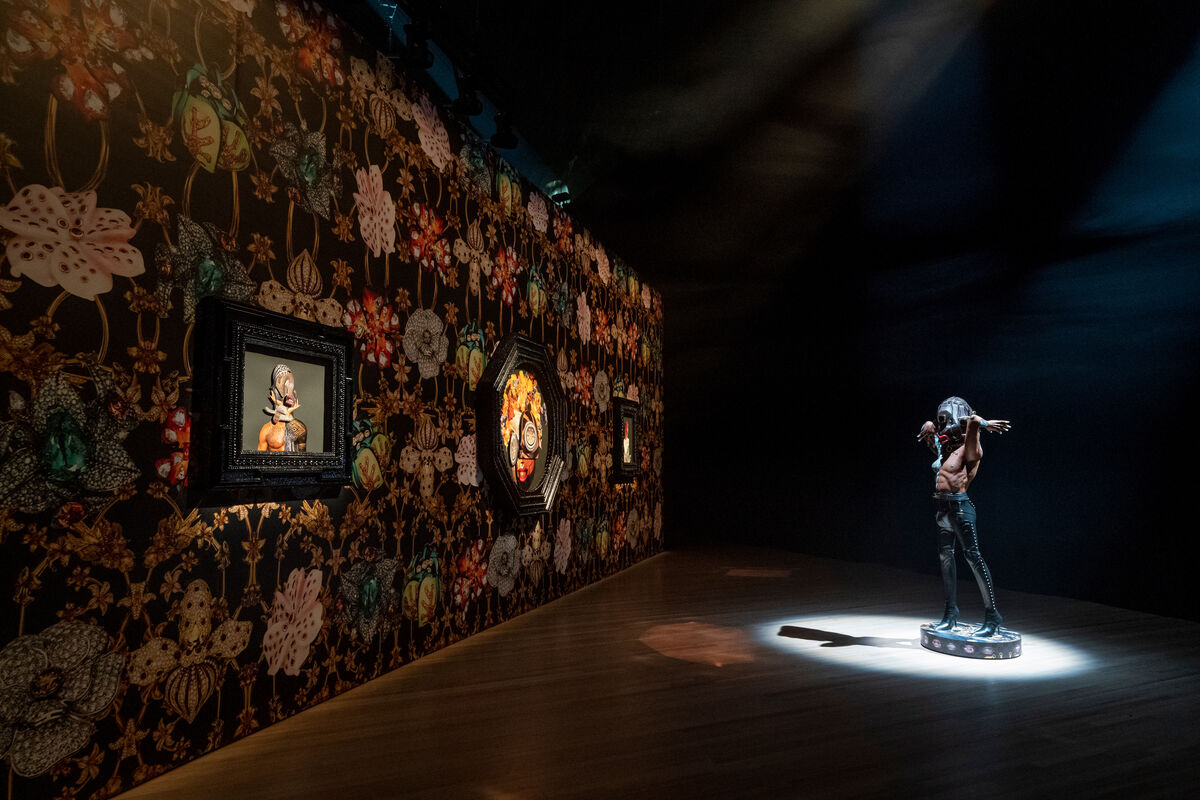Even if you’ve never heard of “voguing” or find yourself stiff-limbed on the dance floor, there’s a chance you’ll feel much more confident after visiting “Assembly,” Rashaad Newsome’s sensorial new solo exhibition at Manhattan’s Park Avenue Armory through March 6. Voguing informs nearly every aspect of the show, which puts Newsome’s multidimensional practice on full display and beckons visitors to rethink the roots of American culture. Video-mapped walls pulsate with projected imagery of computer-generated patterns inspired by African geometries. A 30-foot-tall hologram sculpture, meanwhile, morphs and mutates into various performers. In the evenings, a collective of dancers, musicians, and gospel singers stages a lavish performance in an immersive theater designed by local firm New Affiliates.
So what exactly is voguing? The dance originated in Harlem’s ballroom scene of the 1960s but reached a zenith two decades later, when members of the Black and Latino queer communities competed against one another by striking magazine-ready poses in dance-offs. The pageant-like drag performance brought together communities historically marginalized by gender, sexuality, or race. It permeated the mainstream through Jennie Livingston’s award-winning—and controversial—documentary Paris Is Burning (1990) and Madonna’s equally dicey hit song “Vogue” that same year.


